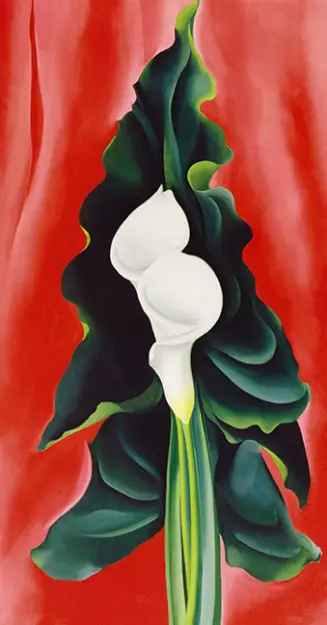The stretcher of the picture bears the signature of O'Keeffe and the date of 1928, so it was painted reasonably early in her very long life. The painting was acquired by her in 1965, indicating that the artist ascribed great importance to the piece. It now hangs in the Georgia O'Keeffe Museum in Santa Fe, New Mexico, U.S.A., the city in which she died at the age of ninety-eight.
O'Keeffe is best known for her large paintings of magnified flowers. She is quoted as having said, "Nobody sees a flower - really - it is so small it takes time - we haven't time - and to see takes time, like to have a friend takes time.". She also once remarked, "What is my experience of the flower if not color?". Raised in rural Wisconsin, she developed a deep love of nature, and the lily became one of her signature motifs, to such an extent that she even earned the nickname, Our Lady of the Lily, coined by Miguel Covarrubias in the New Yorker in 1929. The year before she depicted this exotic and waxy blossom no less than six times.
This basic composition transforms contours and vivid colours into fascinating abstractions. There are exciting and visually powerful contrasts between the pure and intensely articulated white flowers, the undulating green leaves and the cascading backdrop of red fabric. There are also sensuous and rapturous characteristics in the forms which have the scholars of Freud searching for sexual symbols. The work clearly exhibits O'Keeffe's inimitable expressive style, the very individual and non-realistic visionary distillation of her reaction to the environment.
Her feelings towards the subject are emphasised in a manner that is truly impressive and demands our attention. Georgia O'Keeffe was the first woman to have her own exhibition at New York's Museum of Modern Art, such was her reputation for innovation and as a pioneer of twentieth-century art. "I found I could say things with color and shapes that I couldn't say any other way - things I had no words for", she once declared.
